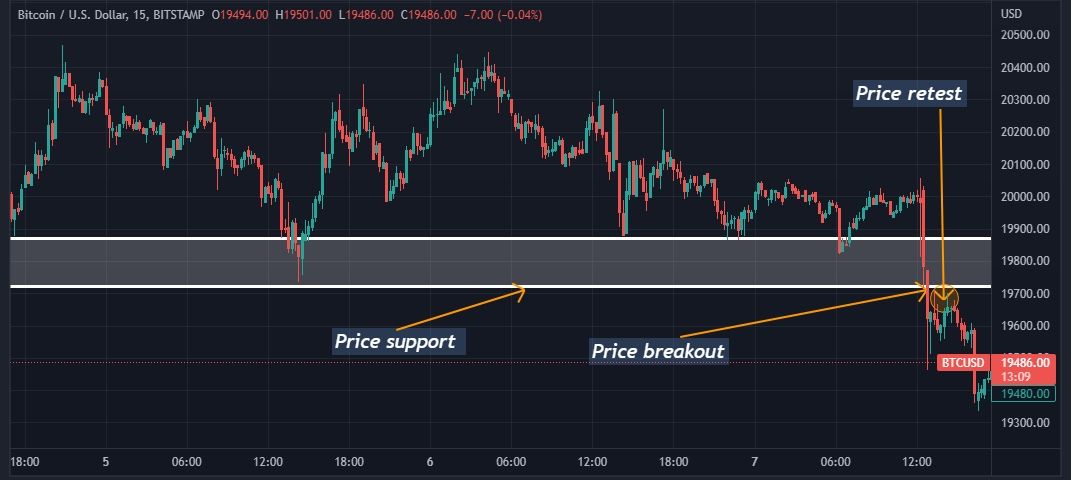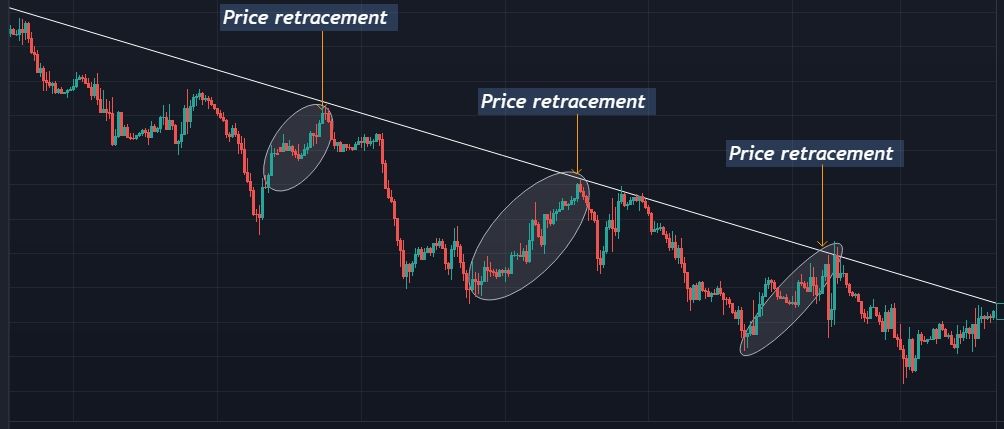There are different ways to trade cryptocurrencies, and your success largely depends on choosing the right way. If you are a new or struggling trader who easily gets overwhelmed by constantly keeping track of the market price, or you have a full-time job that gives you limited time to trade, cryptocurrency swing trading may be best for you.
In this article, you will understand what crypto swing trading entails, how to get started, and if it is suitable for you or not.
What Is Crypto Swing Trading?
A crypto swing trading strategy requires holding open positions for more than a day. Sometimes, it could be as long as a few days or weeks. Traders use this strategy to profit from price movements and market swings in short and medium timeframes.
How Does Crypto Swing Trading Work?
Crypto swing traders trade by concentrating more on the 1-hour to daily price charts. They often use the 4-hour to 24-hour charts to check the market trends and switch to smaller timeframes to execute at the best possible price. The daily chart is also useful for the summary of intraday price movement. For example, if a crypto coin rises from its low till the end of the day, a bullish candlestick will reveal that the market was on an uptrend all day.
The lower timeframes show various market activities, while the larger ones, like the daily and weekly charts, provide a clear picture of the market's overall trend; they filter out the noise. Thus, the higher the timeframe, the clearer the market information. The information you get will determine how you execute the trade.
Furthermore, you can employ both fundamental and technical analysis. Crypto fundamental analysis involves having broad information about a financial asset. In contrast, technical analysis involves using indicators to predict price direction in the cryptocurrency market.
Swing trading also requires employing both fundamental and technical analyses. Carrying out a fundamental analysis will help you gather broad information about the asset, like news and what people think of a coin at a given time. From this, you can judge a crypto asset's market sentiment and medium and long-term potential.
Similarly, technical analysis can help you spot crypto trading opportunities. You can use technical indicators and tools to get more market information, previous trading activities, and significant price points. This will help to predict future market possibilities. A combination of fundamental and technical analyses often gives the best results when carrying out your analyses.
4 Crypto Swing Trading Strategies
Below are some trading styles that can be employed when using the crypto swing strategy.
1. Breakout and Retest Strategy
Swing traders use the breakout strategy by executing a trade after the price breaks above a key resistance level or below key support. Typically, traders who trade breakout strategies wait for a retest. If there is a break out from the resistance, for example, they wait for the price to reverse back to the resistance, which they expect to become support.
In trading breakouts and retests, traders may utilize indicators such as moving averages, Bollinger bands, and even line tools like horizontal lines or rectangles.
2. Reversal Strategy
Traders who trade reversals watch for changes in price momentum as they anticipate a potential change in the market trend. For example, let's say Ether (ETH) has been on an upward trend and then shows signs of a reversal. Swing traders, at this point, can enter a short position (sell) after the price breaks below the key support level.
Common trading indicators used for this strategy include the Relative Strength Index, Moving Average Convergence Divergence, and Average Directional Index.
3. Trend Trading
Swing traders can also make use of the trend trading style. A market trend can be upward, downward, or sideways, and trend traders try to take advantage of it by riding the trend from start to finish.
Trend traders use trading tools like the trendline, rectangles, and many other indicators, including moving averages, average directional index, and relative strength index.
4. Retracement Strategy
Some traders prefer to trade against the trend; they enter into a trade when the price is experiencing a minor correction; they use the retracement strategy. A retracement strategy is also known as a pullback strategy. Swing traders use it during moments when the price is likely to experience a minor retracement or pullback.
Many traders use the Fibonacci retracement tool in combination with many other trading strategies and indicators to trade pullbacks.
Differences Between Day Traders and Swing Traders
One difference between day traders and swing traders is that day traders usually focus on a short-term price movement while swing traders look for larger moves. As a result, day traders execute trades many times a day and close out trades before the market closes.
Swing traders, on the other hand, don't execute trades many times within a day. Moreso, they can hold positions for several days and sometimes weeks. Swing traders are somewhere between day traders and those who hold positions for months or even years.
In addition, day traders are expected to keep a watch on their positions. They spend long hours monitoring trading charts, looking for trade entry and exit positions. A practice that some may find stressful and time-consuming. In contrast, swing traders do not frequently need to watch their trade. This, therefore, allows them to get involved in other activities.
Holding a position for an extended period, as in the case of swing traders, makes the trade susceptible to market gaps and unexpected price swings, which could go against your trades' success.
How to Get Started With Crypto Swing Trading?
You must open a trading account with a reputable exchange to start swing trading. You should check for features like active support, available crypto tokens, transaction fees, and other important features when choosing a crypto exchange.
Paper trading on a platform to get used to how it works is usually a good idea. If you are new to trading, you must learn to trade. We also recommend paper trading until you have a reliable strategy, which can help you trade more confidently. It is always recommended to start trading with a small amount. Don't ever trade with an amount more than you can afford to lose.
As you start, keep yourself abreast of information about the general crypto market and the cryptocurrencies you choose to trade.
Is Swing Trading Good for You?
Swing trading is best suited for someone not in a rush to make a quick trade. This strategy demands patience; you won't find trade setups as often as day traders do. Hence, the need for you to be calm while waiting for a trade setup.
Also, crypto swing trades are suitable for those who do not have time to keep an eye on the market. If you have a full-time job and are interested in trading and investing in crypto, this strategy might be good for you. This is because swing trading takes a long time to complete, and you do not need to check your trades frequently.
If you want fast-paced trading and prefer to analyze market information often and get your trading results on the same day, day trading or cryptocurrency scalping may be ideal for you.
No Trading Strategy Can Be Regarded as the Best
Consistent results usually stem from a combination of various trading factors. To determine which trading strategy fits you, you might want to check if you desire to trade in a more fast-paced setting, as in scalping and day trading, or if you prefer to have it slower with little trade management. Some may even hold their positions for a long time, like months or years.
Paper trading before using your strategy on a live account can help you measure the potential success rate of such a strategy. It could also help you determine the trading style that fits you well. You can also use it to practice your crypto trading psychology.




